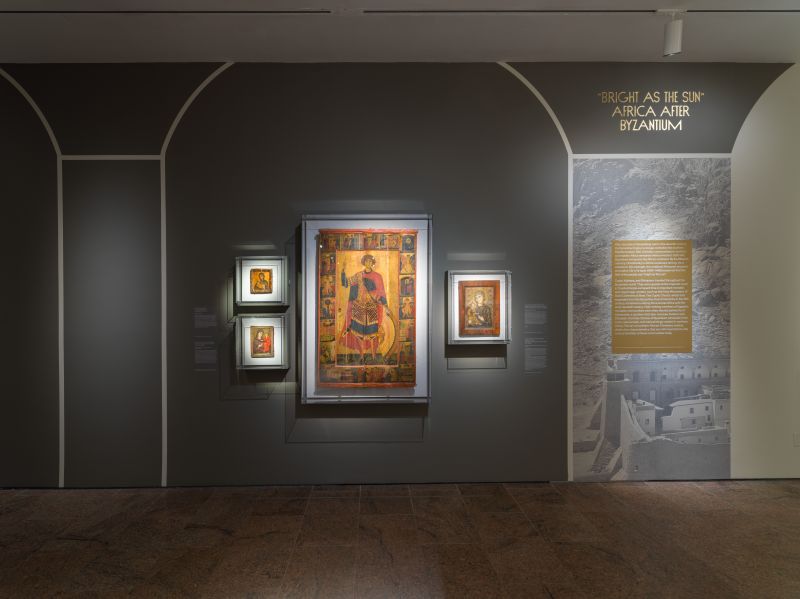
Washington, D.C. Newsroom, Dec 16, 2023 / 07:00 am (CNA).
This Christmas season, New York City’s Metropolitan Museum of Art, commonly known as “the Met,” is displaying one of the oldest Madonna and Christ Child icons in existence along with other pieces of early Christian art in its “Africa & Byzantium” exhibit.
The special exhibit, which opened in late November and will run until early March, highlights nearly 180 intricate and beautiful works of art from North Africa that were created between the fourth and 16th centuries.

A large part of the exhibit is dedicated to North African art that was created in the fourth through seventh centuries, when Christianity was the dominant religious and cultural force in the region.
Although North Africa is primarily Muslim today, the region had a rich Christian history prior to the Islamic invasions of the seventh century. Through this exhibit, the Met is seeking to bring attention to this comparatively little-known period and how North African art and culture were shaped and influenced by the Christian Byzantine Empire, the eastern successor state to the ancient Roman Empire.
Dr. Andrea Achi, the exhibit’s curator, told CNA over email that “even though Byzantium was a vast empire that spanned parts of Africa, Europe, and Asia, its extensive connections to Africa have previously been understudied.”
According to a Nov. 8 Met press release, the exhibition focuses on the art from the centuries in which “much of North Africa was ruled by the Byzantine Empire from its capital in Constantinople” and when “early Christianity developed in kingdoms on the horn of Africa.”

Not all the pieces on display at the Met’s “Africa & Byzantium” exhibit are overtly religious or Christian. But by highlighting the “distinctive religious and artistic traditions that flourished in Tunisia, Egypt, Sudan, and Ethiopia,” the Met said that the exhibit sheds light on the “lively interchange of arts and beliefs” and the “faith, politics, and commerce” that linked Africa to the ancient Byzantine Empire.
One icon displays the Virgin Mary and Christ Child on a golden throne surrounded by Sts. Theodore and George and two angels and overshadowed by the hand of God. The icon was created in the sixth century and was kept at the Holy Monastery of St. Catherine in Sinai, Egypt.

According to the Met, the depiction of the Virgin and Child is one of the oldest surviving icons in the world.
Also notable are several works of art obtained from the ancient Nubian Cathedral of Faras, which Achi told CNA is now entirely submerged in the Nile River. One of the pieces from the Cathedral of Faras is a wall painting depicting Nubian Bishop Petros overshadowed and protected by St. Peter, the first pope. According to the Met, many of these ancient religious works in Nubia are threatened by the ongoing civil war in Sudan.

Other pieces such as Gospel books, icons, jewelry, earthen pots, lamps, paintings, crosses, and tapestries depicting Christ, the Blessed Virgin Mary, saints, archangels, bishops, cathedrals, churches, and biblical stories show a deeply Christian culture in northern Africa.
Though much of the Christian North African works of art were created between the fourth and sixth centuries, Achi said that “as Islam became a dominant faith of the region in the mid-eighth century, distinctive Christian religious and artistic traditions nevertheless flourished in African kingdoms.”
Indeed, a colorful panel painting depicting a crowned Blessed Mother nursing the Christ Child from the 15th century demonstrates a still-thriving Christian artistic culture in late medieval northern Africa.

Achi said that even “after the Byzantine Empire fell in 1453, Ethiopian and Coptic artists in eastern Africa continued to find inspiration in Roman and Byzantine art through the 20th century.”
The influence of Christian Byzantium and its interaction with Africa long outlasted its political power, continuing to impact not only North Africa but also the entire globe, according to Achi.
“Africa & Byzantium builds upon the long legacy of the Met’s award-winning Byzantine exhibitions,” Achi said in the November press release.

“The exhibition,” she continued, “will broaden public understanding of the Byzantine world, its reach, and transcultural authority and examine the critical role of early African Christian civilizations in this creative sphere.”
Max Hollein, director and CEO of the Met, said in an exhibition tour video that the Met is “dedicated to promoting new perspectives, allowing us to constantly challenge our learned perception of the world, that is exactly what this exhibition and the accompanying publication have done.”

“This groundbreaking show combines new scholarly discoveries in art, religion, literature, history, and archeology to reconsider Africa’s centrality within these vast transnational networks of trade and cultural exchange. In this way, this long overdue study offers a more complete global history.”
More information on how to see the Met’s Africa and Byzantium exhibit can be seen here.
If you value the news and views Catholic World Report provides, please consider donating to support our efforts. Your contribution will help us continue to make CWR available to all readers worldwide for free, without a subscription. Thank you for your generosity!
Click here for more information on donating to CWR. Click here to sign up for our newsletter.





Excellent article! Thank you!!!
Wonderful samples of the exhibit, giving us a visual historical cultural sense of the universal Church.